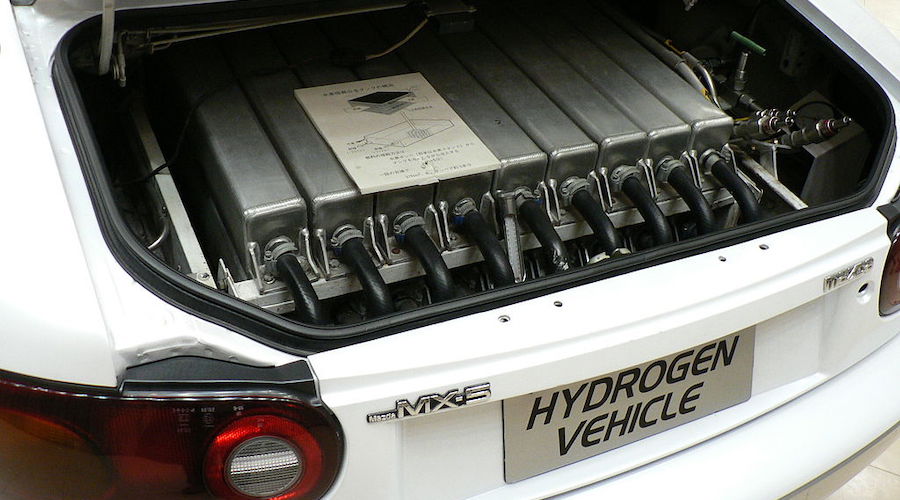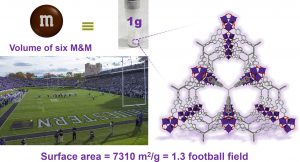New gas storage method makes cell-powered vehicles more viable
 Reference image of the Mazda MX-5 hydrogen vehicle. (Image by 160SX, Wikimedia Commons).
Reference image of the Mazda MX-5 hydrogen vehicle. (Image by 160SX, Wikimedia Commons).
Researchers at Northwestern University in the US, in collaboration with computational modellers at the Colorado School of Mines and colleagues at the National Institute for Standards and Technology, developed an onboard storage method for hydrogen and methane gas for the next-generation clean energy vehicles.
By using chemical principles, the team led by Omar K. Farha designed porous materials that have a precise atomic arrangement, which gives them ultrahigh porosity and surface area. These qualities allow them to store more hydrogen and methane than conventional adsorbent materials at much safer pressures and at much lower costs.
 A one-gram sample of the Northwestern material (with a volume of six M&Ms) has a surface area that would cover 1.3 football fields. (Image courtesy of Northwestern University).
A one-gram sample of the Northwestern material (with a volume of six M&Ms) has a surface area that would cover 1.3 football fields. (Image courtesy of Northwestern University)."Adsorbents are porous solids which bind liquid or gaseous molecules to their surface," Farha explained. "Thanks to its nanoscopic pores, a one-gram sample of the Northwestern material (with a volume of six M&Ms) has a surface area that would cover 1.3 football fields."
In a media statement, the chemist said that the ultra-porous materials, dubbed metal-organic frameworks or MOFs, were named NU-1501 and were built from organic molecules and metal ions or clusters. Such molecules and clusters self-assemble to form multidimensional, highly crystalline, porous frameworks.
"To picture the structure of a MOF, envision a set of Tinkertoys in which the metal ions or clusters are the circular or square nodes and the organic molecules are the rods holding the nodes together," Farha said.
Hydrogen- and methane-powered vehicles currently require high-pressure compression to operate. Because of hydrogen's low density, it is expensive to accomplish this pressure, and it also can be unsafe because the gas is highly flammable.
However, according to these US scientists, the next generation of safer, clean-energy automobiles can be developed using the novel adsorbent materials that can store hydrogen and methane gas onboard vehicles at much lower pressures.
"The highly porous materials in this study balance both the volumetric (size) and gravimetric (mass) deliverable capacities of hydrogen and methane, bringing researchers one step closer to attaining these targets," Farha said. "We can store tremendous amounts of hydrogen and methane within the pores of the MOFs and deliver them to the engine of the vehicle at lower pressures than needed for current fuel cell vehicles."